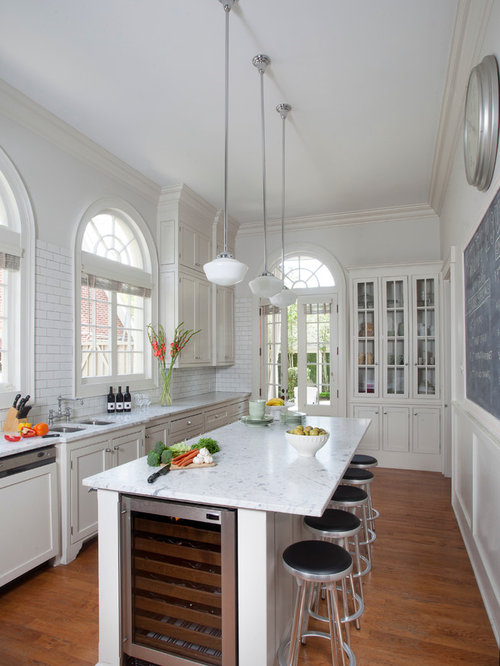Importance of Choosing the Right Sink Size
When designing a kitchen, the sink is one of the most essential components. The size of the sink, especially when it is placed on a kitchen island, can significantly impact both the functionality and aesthetics of your kitchen. A well-sized sink can make cooking and cleaning more efficient, while a poorly chosen size might cause inconvenience and disrupt the workflow. The right sink size ensures that your kitchen island can be a multifunctional space, serving as a prep area, cleanup zone, and sometimes even as a dining spot.
Selecting the appropriate sink size for your kitchen island requires careful consideration of various factors, including the overall size of the island, the primary use of the sink, and the kitchen’s layout. A large sink might dominate a small island, leaving little room for other activities, while a too-small sink might not meet the needs of a busy household. Therefore, balancing these factors is crucial to achieving a harmonious and functional kitchen design.

Moreover, the sink size can influence the type and number of tasks you can perform efficiently. For instance, a larger sink is more suitable for washing large pots and pans, soaking dishes, or even filling buckets for cleaning purposes. On the other hand, a smaller sink might be more appropriate for a secondary prep sink or a bar sink, catering to lighter tasks like washing vegetables or mixing drinks.
In addition to functionality, the sink size contributes to the overall aesthetic appeal of your kitchen. A sink that is proportionate to the kitchen island and the surrounding cabinetry creates a cohesive and balanced look. It’s important to choose a sink size that complements the design elements of your kitchen, enhancing its style and elegance.

Factors to Consider When Choosing Sink Size
When selecting the size of your kitchen island sink, several factors need to be taken into account to ensure it meets your needs and fits well within your kitchen design. One of the primary considerations is the size of your kitchen island. The island should have enough space to accommodate the sink while leaving sufficient room for food preparation and other activities. As a general guideline, the sink should occupy no more than a third of the total island space to maintain a balanced and functional layout.
Another critical factor is the primary function of the sink. Determine whether the sink will be used mainly for food preparation, cleaning, or as a secondary sink. For food prep, a smaller sink may suffice, while a larger sink is beneficial for washing dishes and large pots. The usage frequency also plays a role; households that cook frequently or entertain often might benefit from a larger sink to handle the increased workload.
The number of basins in the sink is another aspect to consider. Single-basin sinks offer more space for washing large items, while double-basin sinks provide flexibility for multitasking, such as washing dishes on one side and rinsing vegetables on the other. The choice between single and double basins depends on your cooking habits and preferences.
Lastly, the depth of the sink is an important consideration. Deeper sinks can hold more water and larger items, which is advantageous for heavy-duty cleaning tasks. However, deeper sinks may also require more bending, which could be uncomfortable for some users. Balancing depth with comfort and accessibility is essential to choosing the right sink size for your kitchen island.

Standard Sink Sizes and Their Applications
Understanding standard sink sizes can help you choose the most suitable option for your kitchen island. Kitchen sinks generally come in a range of sizes, typically measured in width and depth. Standard widths for kitchen sinks range from 24 to 36 inches, with depths varying from 6 to 12 inches. These dimensions cater to different needs and preferences, allowing for a wide variety of applications.
A 24-inch sink is one of the smaller standard sizes, ideal for compact kitchens or as a secondary sink on a large kitchen island. This size is sufficient for basic tasks like handwashing dishes, rinsing vegetables, and light food prep. It’s also a good choice for bar areas or auxiliary prep zones, where space is limited, but functionality is still necessary.
A 30-inch sink is a versatile and popular choice, providing ample space for most kitchen tasks without overwhelming the island space. This size is suitable for medium to large kitchens and can accommodate larger pots and pans, making it ideal for households that cook regularly. The 30-inch sink strikes a balance between functionality and space efficiency, making it a favorite among many homeowners.
For those requiring even more capacity, a 36-inch sink offers extensive room for washing large items and handling substantial cooking and cleaning tasks. This size is perfect for large families or avid cooks who need a robust and spacious sink. While it requires a larger kitchen island, the 36-inch sink ensures maximum efficiency and convenience, making it a centerpiece of the kitchen.
In addition to width, the depth of the sink also varies. Shallower sinks (6-8 inches) are easier to clean and access, suitable for general use, while deeper sinks (9-12 inches) can hold more water and larger items, ideal for heavy-duty tasks. Choosing the right depth depends on your specific needs and how you use your kitchen sink.

Tips for Integrating a Sink into Your Kitchen Island
Integrating a sink into your kitchen island involves more than just choosing the right size; it requires thoughtful planning and design to ensure it enhances your kitchen’s functionality and aesthetics. One of the first steps is to determine the sink’s placement on the island. The sink should be positioned to maximize efficiency and workflow, typically near the cooking area or dishwasher to facilitate easy access and reduce the distance for carrying heavy pots and pans.
Consider incorporating additional features around the sink to enhance its usability. Installing a pull-out sprayer faucet can make cleaning and rinsing easier, while built-in soap dispensers and cutting boards can add convenience and reduce clutter. Including ample counter space on either side of the sink allows for a seamless workflow, providing areas for food prep and drying dishes.
Storage is another crucial aspect to consider when integrating a sink into your kitchen island. Ensure there are adequate cabinets and drawers around the sink for storing cleaning supplies, dishware, and other kitchen essentials. Proper storage solutions help maintain a tidy and organized kitchen, making daily tasks more efficient and enjoyable.
Last, the materials and finishes of the sink and surrounding elements should complement the overall design of your kitchen. Stainless steel is a popular choice for its durability and modern look, while porcelain and composite materials offer different aesthetic options. The countertop material should also be water-resistant and easy to clean, ensuring that your kitchen island remains functional and visually appealing.

Common Mistakes to Avoid
Overlooking Proportions
One of the most common mistakes when choosing a kitchen island sink size is overlooking the proportions relative to the island and the kitchen itself. A sink that is too large can dominate the island, leaving insufficient space for other activities and making the kitchen feel cramped. Conversely, a sink that is too small might not meet the needs of the household, causing frustration and inefficiency. Always ensure that the sink size is proportionate to the island and the overall kitchen layout to maintain a balanced and functional space.
Ignoring the Workflow
Another mistake is ignoring the workflow in the kitchen. The sink should be strategically placed to facilitate an efficient workflow, ideally between the cooking and cleaning areas. Placing the sink in an inconvenient location can disrupt the flow of activities, making cooking and cleaning more cumbersome. Consider the kitchen’s work triangle (the relationship between the sink, stove, and refrigerator) when deciding on the sink’s placement to ensure smooth and efficient operations.
Neglecting Additional Features
Neglecting to include additional features and accessories around the sink can also be a mistake. Features like pull-out sprayers, soap dispensers, and integrated cutting boards can enhance the sink’s functionality and convenience. Skipping these additions might lead to a less efficient and enjoyable kitchen experience. Think about how you use your sink daily and incorporate features that will make those tasks easier and more efficient.
Skimping on Quality
Lastly, skimping on the quality of the sink and related fixtures can lead to long-term issues. A poor-quality sink may not withstand daily use, leading to problems like rust, stains, and leaks. Investing in a high-quality sink and durable fixtures ensures longevity and reliability, saving you from costly repairs and replacements in the future. Choose materials and brands known for their durability and performance to get the best value for your investment.

What is the best size for a kitchen island sink?
The best size for a kitchen island sink depends on the size of your kitchen island and how you plan to use the sink. For most medium to large kitchens, a 30-inch sink is a versatile and popular choice, providing ample space for various tasks without overwhelming the island. If you have a larger kitchen and do a lot of cooking, a 36-inch sink might be ideal. For smaller kitchens or secondary sinks, a 24-inch sink can be sufficient. Always consider your specific needs and the proportions of your kitchen island when choosing the sink size.
Can I install a double-basin sink on my kitchen island?
Yes, you can install a double-basin sink on your kitchen island. Double-basin sinks are excellent for multitasking, allowing you to wash dishes in one basin while rinsing vegetables or soaking pots in the other. When choosing a double-basin sink, ensure that your kitchen island is large enough to accommodate it without compromising counter space. Double-basin sinks are particularly useful for busy kitchens where multiple tasks need to be performed simultaneously.
How deep should my kitchen island sink be?
The depth of your kitchen island sink should match your specific needs and preferences. Standard depths range from 6 to 12 inches. Shallower sinks (6-8 inches) are easier to access and clean, suitable for general use. Deeper sinks (9-12 inches) can hold more water and larger items, ideal for heavy-duty cleaning tasks and washing large pots and pans. Consider the types of activities you’ll be performing in the sink and choose a depth that provides the right balance between functionality and comfort.
Are there any design considerations for a kitchen island sink?
When designing a kitchen island sink, consider its placement to ensure an efficient workflow. Position the sink near the cooking area and dishwasher to minimize the distance for carrying heavy pots and dishes. Incorporate additional features like pull-out sprayers, soap dispensers, and integrated cutting boards to enhance usability. Ensure there is adequate counter space on either side of the sink for prep work and drying dishes. Also, choose materials and finishes that complement the overall kitchen design, creating a cohesive and stylish look.
What materials are best for kitchen island sinks?
The best materials for kitchen island sinks include stainless steel, porcelain, and composite materials. Stainless steel is durable, easy to clean, and has a modern look, making it a popular choice. Porcelain sinks offer a classic and elegant appearance but may require more maintenance to prevent chipping and staining. Composite sinks, made from materials like granite or quartz, are highly durable and resistant to scratches and stains, available in a variety of colors and finishes to match your kitchen decor. Consider your aesthetic preferences, maintenance requirements, and budget when choosing the material for your kitchen island sink.

Your Kitchen Sink Designs for Living VT

Narrow Kitchen Island Home Design Ideas, Pictures, Remodel and Decor

Different Island Shapes for Kitchen Designs and Remodeling

Related Posts: